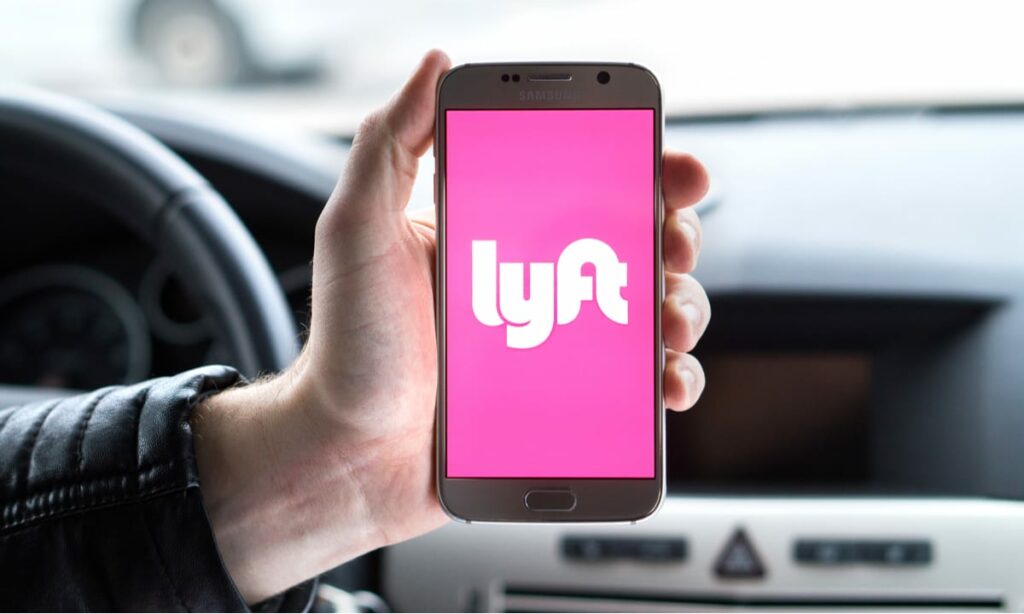Lyft has come a long way since its launch in 2012. Once a scrappy Uber competitor, it has grown into a massive player in the US ride-hailing market. In 2024, Lyft recorded $5.79 billion in annual revenue, a 31% year-over-year increase. It reached 44 million active riders and completed 828 million rides, showing strong recovery and growth momentum.
This scale wouldn’t be possible without a solid and forward-looking lyft tech stack. The platform now supports real-time ride tracking, autonomous vehicle integrations, AI-powered support, programmatic ads, and city-scale micromobility systems. This blog dives into the core technologies behind Lyft’s success and how they’ve evolved to meet 2025’s user and operational demands.
Let’s break down the stack that powers it all.
TL;DR
Lyft recorded $5.79 billion in revenue in 2024 with 44 million active riders, driven by a strong tech foundation.
- Frontend is built using React, Redux, Next.js, and Tailwind CSS for a fast, mobile-first user experience.
- Backend is powered by Golang, Python, Kubernetes, FacetController, and Envoy to manage scalable microservices.
- Lyft uses Apache Kafka, Spark, and Snowflake for real-time data processing and analysis.
- Implements Anthropic Claude, custom machine learning models, TensorFlow, and PyTorch for AI and Machine Learning purposes.
- Partners with Mobileye and May Mobility, with fleet management through Flexdrive for managing autonomous fleets.
- They run in-app advertising through Kevel and StackAdapt, with user data unified by Segment.
Businesses can launch scalable ride-hailing platforms faster with Appscrip’s ready-to-go tech stack.

Frontend technologies of Lyft Tech Stack
Understanding the frontend technologies of Lyft tech stack is crucial to comprehend how this ridesharing giant has seamlessly integrated various components to drive its business forward. Let’s explore the intricacies of Lyft’s frontend tech stack, including programming languages, frameworks, libraries, and other tools that have contributed to its success in the global ridesharing market.
Lyft’s frontend tech stack is a blend of modern and robust technologies that work together to deliver a seamless and enjoyable user experience. Some of the key components include:
React: React is a popular JavaScript library used for building user interfaces. Lyft utilizes React to create an interactive and responsive web application that can handle real-time updates, such as driver location and ride status changes. React’s component-based architecture allows for easy maintenance and scalability, making it an ideal choice for Lyft’s fast-paced development environment.
Redux: As a state management solution, Redux JS is used in conjunction with React to manage the application’s state in a predictable and consistent manner. By centralizing the application’s state, Redux enables Lyft to maintain a single source of truth, ensuring data consistency across different parts of the app.
Webpack: Webpack is a powerful and flexible module bundler that helps Lyft optimize its web application by bundling and minifying assets, such as JavaScript, CSS, and HTML files. This results in faster page load times and improved performance, which are essential for providing a smooth user experience.
Babel: Babel is a JavaScript compiler that allows Lyft tech stack to use the latest JavaScript features while maintaining compatibility with older browsers. By transpiring the code to a version that’s compatible with a wide range of browsers, Babel ensures that Lyft’s web app remains accessible to a diverse user base.
Enzyme: To ensure the reliability and stability of Lyft’s frontend components, Enzyme is used as a testing utility for React applications. It allows for easy manipulation, traversal, and simulation of React components, enabling Lyft to catch bugs and maintain a high-quality frontend experience.
Backend technologies of Lyft Tech Stack
Lyft’s backend tech stack is designed to support the company’s mission to provide efficient and reliable transportation services. Key components of their backend tech stack include:
Python: As Lyft’s primary programming language, Python is used extensively for server-side scripting, data analysis, and machine learning. Its readability and simplicity make it an excellent choice for managing complex systems and algorithms.
Java: Lyft also leverages Java for its backend services, particularly for high-performance and scalable applications. Java’s robust libraries and frameworks enable the development of reliable and efficient systems that can handle the demands of the transportation industry.
Go: Go is another language used in Lyft’s backend tech stack. Known for its simplicity, speed, and concurrency, Go is employed for creating microservices that can handle large volumes of data and requests.
Swift: Swift, a powerful and versatile language, is used by Lyft for developing its iOS applications. Swift’s safety features and performance optimizations ensure a seamless user experience for Lyft’s riders and drivers on Apple devices.
Flask: Flask is a lightweight Python web framework used for developing Lyft’s APIs and web applications. Understanding Python time complexity can help optimize Flask applications for better performance and scalability. Its minimalistic design and modular nature allow for faster development and easy integration with other components of Lyft’s tech stack.
Docker: To ensure consistent and reproducible environments, Lyft utilizes Docker for containerization. Docker allows applications and their dependencies to be packaged together, simplifying deployment and scaling processes.
Git: Lyft relies on Git for version control and collaboration. This distributed version control system allows developers to efficiently track changes, collaborate on projects, and manage the codebase.
Amazon Web Services (AWS): As a critical component of Lyft’s infrastructure, AWS provides a scalable, secure, and cost-effective solution for hosting and managing the company’s data and services. Lyft takes advantage of various AWS services like EC2, S3, and RDS to ensure high availability and performance.
Apache Kafka: Lyft uses Apache Kafka, a distributed streaming platform, to manage real-time data processing and event-driven architectures. Kafka ensures reliable and scalable communication between Lyft’s various microservices.
Envoy: Developed in-house at Lyft, Envoy is an open-source edge and service proxy designed for cloud-native applications. It provides a high-performance, extensible, and resilient solution for service-to-service communication, traffic management, and observability.

Infrastructure technologies of Lyft Tech Stack
AWS (Amazon Web Services): Lyft relies on AWS for its cloud computing infrastructure, which provides a variety of services like EC2, S3, and RDS for compute, storage, and database management, respectively. This allows Lyft to scale its operations seamlessly and maintain high availability during peak demand periods.
Kubernetes: Lyft tech stack uses Kubernetes, an open-source container-orchestration platform, for automating the deployment, scaling, and management of containerized applications. Kubernetes helps Lyft manage its microservices architecture by providing an efficient way to deploy and manage containerized applications at scale.
Envoy: Lyft developed Envoy, an open-source edge and service proxy, to manage service-to-service communication in its microservices architecture. Envoy provides valuable features such as load balancing, service discovery, and traffic management, which help Lyft maintain a resilient and high-performing infrastructure.
Clutch: Lyft created Clutch, an extensible UI and API platform for infrastructure tooling. It allows Lyft to build custom, user-friendly interfaces for managing various aspects of its infrastructure, such as deployments, pipelines, and incident management.
Apache Kafka: Lyft uses Apache Kafka, a distributed streaming platform, for real-time data processing and event-driven architectures. Kafka enables Lyft to process vast amounts of data generated by its on-demand taxi service and power features like ride tracking, ETA calculation, and dynamic pricing.
Apache Spark: Lyft leverages Apache Spark, an open-source distributed computing system, for large-scale data processing and machine learning tasks. Spark allows Lyft’s data science and engineering teams to analyze and process the massive amounts of data generated by its platform, leading to valuable insights and improved decision-making.
Terraform: Lyft employs Terraform, an open-source infrastructure as code (IaC) tool, for provisioning and managing its cloud resources. Terraform enables Lyft to automate and streamline its infrastructure management, reducing manual effort and increasing reliability.
The cloud infrastructure of Lyft tech stack is a combination of cutting-edge technologies and platforms designed to support its on-demand taxi service. By leveraging AWS, Kubernetes, Envoy, Clutch, Apache Kafka, Apache Spark, and Terraform, Lyft can ensure high performance, scalability, and reliability while delivering a seamless user experience to its customers.
AI and ML Components of Lyft Tech Stack
Anthropic Claude Integration: As of 2025, Lyft uses Claude to manage a majority of its customer support queries. This reduced resolution time by 87% and offloaded thousands of support tickets weekly.
Custom ML Models: Lyft uses predictive models to manage ETAs, surge pricing, rider churn, fraud detection, and route optimization in real time.
TensorFlow & PyTorch: Both frameworks are used internally depending on the use case. TensorFlow powers production-level inference models, while PyTorch is often used for experimentation and research.
Autonomous Vehicles & Robotaxi Stack
Mobileye Integration: Lyft partners with Mobileye for AV technology, helping to pilot autonomous ride services in cities like Austin and Dallas. Mobileye’s tech enables high-definition mapping and decision-making on urban roads.
May Mobility Partnership: Lyft operates autonomous Toyota Sienna vehicles via May Mobility. These run in controlled areas, offering shared rides to test AV readiness in dense urban zones.
Flexdrive: Used for managing AV fleet operations, including predictive maintenance, vehicle tracking, and usage analytics.
Monetization & Ad Stack of Lyft
Kevel: Lyft uses Kevel to build its custom ad server. It helps deliver relevant in-app ads without slowing down the user experience.
StackAdapt: For programmatic ad buying, Lyft collaborates with StackAdapt. This gives advertisers direct access to over 40 million Lyft riders, targeting them based on location, behavior, and time of day.
Segment: Segment is used to unify customer data from various sources across Lyft’s ecosystem. It powers personalization, ad targeting, and measurement without compromising user privacy.
Together, these tools help Lyft build a scalable monetization layer while improving user engagement and advertiser ROI.
From scalable microservices to advanced AV systems and AI-powered support, every part of the platform is built for scale, speed, and personalization.
The future will likely involve broader AV rollouts, deeper AI integrations for real-time decision-making with robotaxi solutions, and stronger monetization through in-app ads and subscriptions. Lyft is also expected to double down on sustainability through micromobility and greener fleet management.
For businesses looking to build apps in the ride-sharing, delivery, or mobility space, this kind of tech foundation is essential. Appscrip offers ride hailing pre-built solutions that match this level of scale and flexibility—perfect for anyone looking to move fast and compete in the mobility tech space.
Why choose Appscrip for ride-hailing app development?
- Proven infrastructure that supports scalability and real-time features like geo-tracking, ETA calculation, and fare management.
- Pre-integrated support for driver-rider matching, dynamic pricing, and in-app chat.
- Quick launch capabilities with white-labeled apps for Android and iOS.
- Built-in support for fleet management, analytics dashboards, and payment gateways.
- Dedicated post-launch support and customization options for new features, including AV and micromobility modules.
Whether you’re targeting a niche market or building a city-wide solution, Appscrip helps reduce time-to-market while giving you a tech stack inspired by platforms like Lyft.





